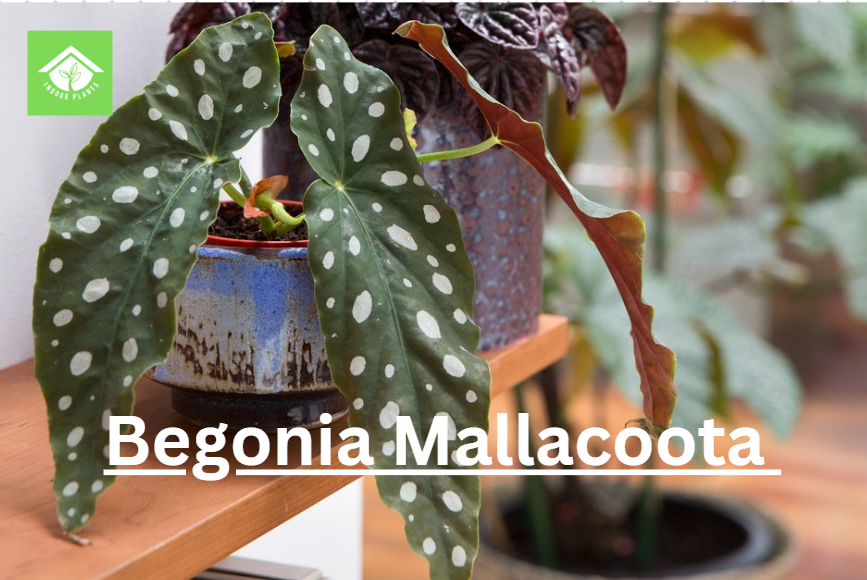Begonia Mallacoota, a popular variety of the Begonia family, is known for its lush foliage and vibrant flowers. Proper pruning is essential to ensure the plant’s health, promote growth, and maintain its attractive appearance. In this comprehensive guide, we’ll explore how to prune Begonia Mallacoota for optimal growth, discuss the importance of regular pruning, and provide tips for caring for this beautiful plant.
Understanding Begonia Mallacoota
Before diving into the pruning process, it’s essential to understand what makes Begonia Mallacoota unique. This plant is part of the larger Begonia family, which includes varieties such as Polka Dot Begonia and Dragon Wing Begonia. The Mallacoota variety is prized for its large, asymmetrical leaves that come in various shades of green, often with distinctive spots or patterns.
Characteristics of Begonia Mallacoota
- Leaves: The leaves of Begonia Mallacoota are broad, often with serrated edges and a waxy texture. They can vary in color from deep green to lighter shades, sometimes featuring spots similar to those seen on Polka Dot Begonia.
- Flowers: This variety produces small, delicate flowers, typically pink or white, which add a subtle beauty to the plant.
- Growth Habit: Begonia Mallacoota grows in a bushy, compact form, making it an excellent choice for indoor and outdoor gardens.
Why Pruning is Essential for Begonia Mallacoota
Pruning is a vital aspect of plant care that encourages healthy growth and prevents the plant from becoming leggy or overgrown. For Begonia Mallacoota, regular pruning ensures that the plant remains lush and vibrant, with plenty of new growth and minimal dead or diseased leaves.
Benefits of Pruning
- Promotes New Growth: By removing old or damaged leaves, you stimulate the plant to produce new, healthy foliage.
- Prevents Disease: Dead or decaying leaves can harbor pests and diseases. Regular pruning helps keep the plant healthy by removing these potential problem areas.
- Enhances Appearance: Pruning helps maintain the plant’s shape and size, ensuring it looks its best in any setting.
- Improves Air Circulation: Removing excess foliage allows for better air circulation around the plant, reducing the risk of fungal infections.
Tools Needed for Pruning Begonia Mallacoota
Before you start pruning, gather the necessary tools to ensure a clean and effective process. Here’s what you’ll need:
- Sharp Pruning Shears: A good pair of pruning shears is essential for making clean cuts that won’t damage the plant.
- Disinfectant: It’s crucial to disinfect your tools before and after pruning to prevent the spread of disease. A simple solution of water and rubbing alcohol works well.
- Gloves: While not essential, gloves can protect your hands from the plant’s sap and provide a better grip on your tools.
- Trash Bag or Compost Bin: Have a place ready to dispose of or compost the pruned leaves and stems.
Step-by-Step Guide to Pruning Begonia Mallacoota
Pruning Begonia Mallacoota isn’t complicated, but following a step-by-step process will ensure the best results. Here’s how to do it:
1. Assess the Plant
Before you begin pruning, take a moment to assess the plant. Look for any dead, damaged, or diseased leaves that need to be removed. Also, note any areas where the plant is becoming too bushy or where leaves are overcrowding each other.
2. Start with the Oldest Leaves
Begin pruning by removing the oldest leaves first. These are usually found at the base of the plant and may appear yellowed or wilted. Use your pruning shears to cut these leaves off at the base, being careful not to damage the stem.
3. Remove Damaged or Diseased Leaves
Next, look for any leaves that show signs of damage or disease. These might have brown spots, holes, or other blemishes. Remove these leaves promptly to prevent the spread of disease to the rest of the plant.
4. Thin Out Overcrowded Areas
If certain parts of your Begonia Mallacoota are becoming too dense, it’s time to thin them out. Carefully prune back some of the leaves and stems in these areas to improve air circulation and allow light to reach all parts of the plant.
5. Shape the Plant
Once you’ve removed the old, damaged, and overcrowded leaves, take a step back and assess the overall shape of the plant. If necessary, trim back any remaining stems or leaves to create a more balanced and aesthetically pleasing shape.
6. Clean Up and Dispose of Pruned Material
After pruning, be sure to clean up all the removed leaves and stems. Dispose of them in a trash bag or compost bin, and disinfect your tools to prevent any potential spread of disease.
Aftercare for Begonia Mallacoota Post-Pruning
Pruning can be stressful for any plant, including Begonia Mallacoota. Proper aftercare is crucial to ensure that the plant recovers quickly and continues to thrive.
Watering
Immediately after pruning, give your Begonia Mallacoota a thorough watering. This helps the plant recover and encourages new growth. However, be careful not to overwater, as Begonias are susceptible to root rot.
Light
Place the plant in a location where it will receive plenty of indirect light. Too much direct sunlight can scorch the newly pruned leaves, while too little light can slow down the recovery process.
Fertilizing
About a week after pruning, consider applying a balanced, water-soluble fertilizer. This will provide the nutrients the plant needs to support new growth and stay healthy.
Common Pruning Mistakes to Avoid
While pruning is essential for the health of your Begonia Mallacoota, it’s easy to make mistakes that can harm the plant. Here are some common pitfalls to avoid:
Over-Pruning
It’s tempting to cut back a lot of growth at once, but over-pruning can shock the plant and hinder its recovery. Always aim to remove no more than 25% of the plant’s foliage at any one time.
Pruning at the Wrong Time
Pruning at the wrong time of year can also stress the plant. The best time to prune Begonia Mallacoota is during its active growing season, usually in spring or early summer. Avoid pruning during the dormant winter months.
Not Disinfecting Tools
Failing to disinfect your pruning tools before and after use can spread disease from one plant to another. Always clean your tools thoroughly to prevent this.
Ignoring Diseased Leaves
It’s crucial to remove any diseased leaves as soon as you spot them. Leaving them on the plant can lead to the disease spreading, potentially affecting the entire plant.
Begonia Mallacoota Care Tips
In addition to regular pruning, there are several other care practices that will help your Begonia Mallacoota thrive.
Proper Watering
Begonia Mallacoota prefers slightly moist soil but is prone to root rot if overwatered. Water the plant when the top inch of soil feels dry, and be sure to use a pot with good drainage.
Ideal Light Conditions
This plant thrives in bright, indirect light. Too much direct sunlight can scorch the leaves, while too little light can lead to leggy growth and poor flowering.
Fertilizing Schedule
Feed your Begonia Mallacoota with a balanced, water-soluble fertilizer every 4-6 weeks during the growing season. This will help support healthy growth and vibrant blooms.
Propagation
Begonia Mallacoota can be propagated through stem cuttings. Take a healthy stem cutting with at least two leaves, place it in water or moist soil, and wait for roots to develop before transplanting.
Would you like to read: Yin Yoga Poses for Beginners: A Step-by-Step Guide
Final Conclusion
Pruning Begonia Mallacoota is a straightforward process that can significantly enhance the plant’s health and appearance. By following the steps outlined in this guide, you’ll be able to maintain a lush, vibrant plant that continues to grow and thrive. Remember to prune regularly, provide proper care, and avoid common mistakes to ensure your Begonia Mallacoota remains a beautiful and healthy addition to your garden.


